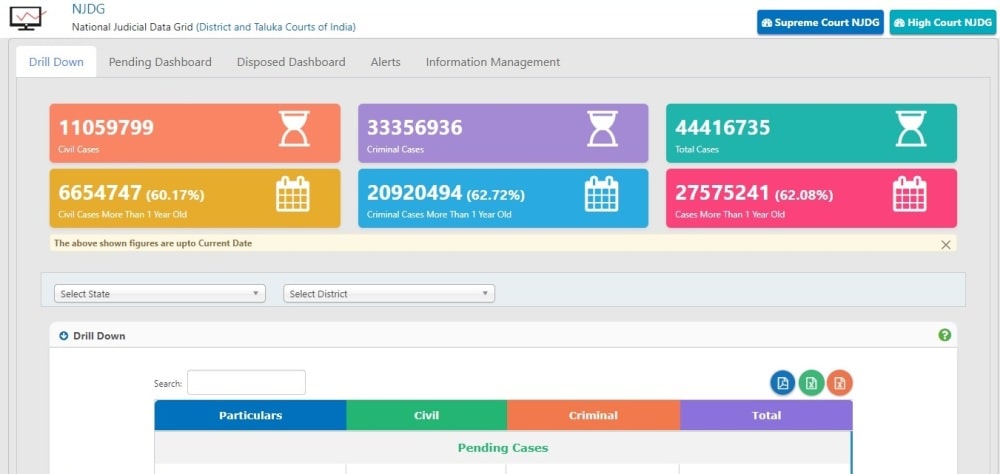
With the Supreme Court of India onboarding the National Judicial Data Grid (NJDG) portal, the flagship project of the e-Courts project completes the full circle. Now we have all three tiers of the Indian judiciary on the NJDG portal. NJDG is recognized as a significant innovation under the ease of doing business initiative of the Government of India.
The NJDG portal is a national repository of data relating to cases instituted, pending, and disposed of by the courts across the length and breadth of the country. Now with a click of a button, one may access case-related information, statistics such as institution, pendency and disposal of cases, case types, and year-wise break-up of the Supreme Court of India.
NJDG has been developed by the National Informatics Centre (NIC) in close coordination with the in-house software development team of the Computer Cell, Registry with an interactive interface and analytics dashboard. The entire database shall be periodically updated on the NJDG portal.
To date, the NJDG portal remains unparalleled, and the same is accessible at the click of a button to its citizenry. NJDG is sui generis as it has brought transparency, and accountability within the realm of the Indian judicial system by sharing all relevant data of cases instituted, pending, and disposed of.
Since the launch of the NJDG portal, the benefits of the NJDG portal can be summed up as under:
increased transparency
accountability and responsibility
improved efficiency
increased coordination
informed decision making
optimum deployment of resources and manpower
single source of data
huge potential for high-quality research work
The NJDG-SCI portal can be accessed through the website of the Supreme Court of India by clicking on the tab button – NJDG
There are three main web pages of the NJDG-SCI portal
At a glance
Pending dashboard
Disposed dashboard